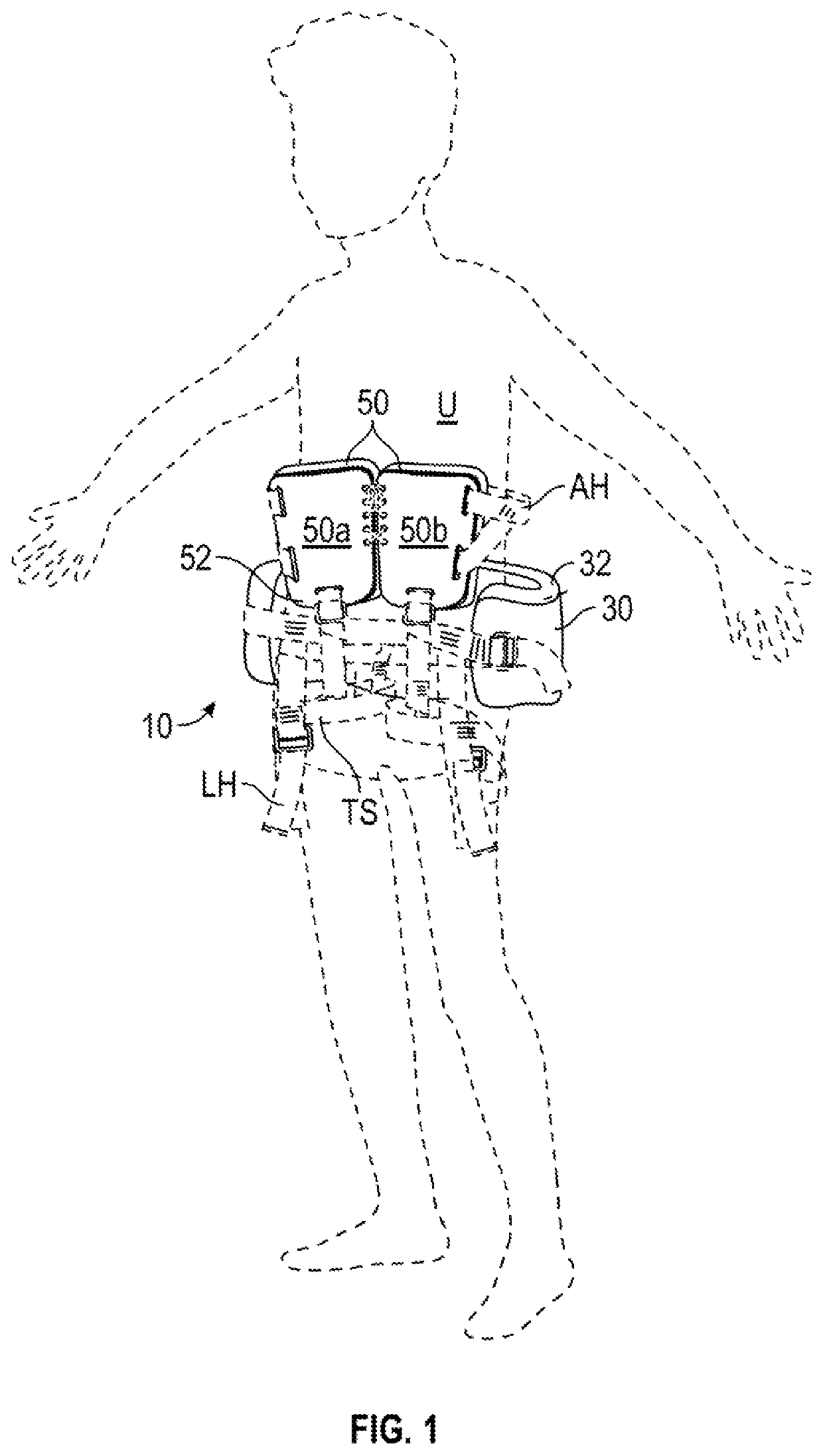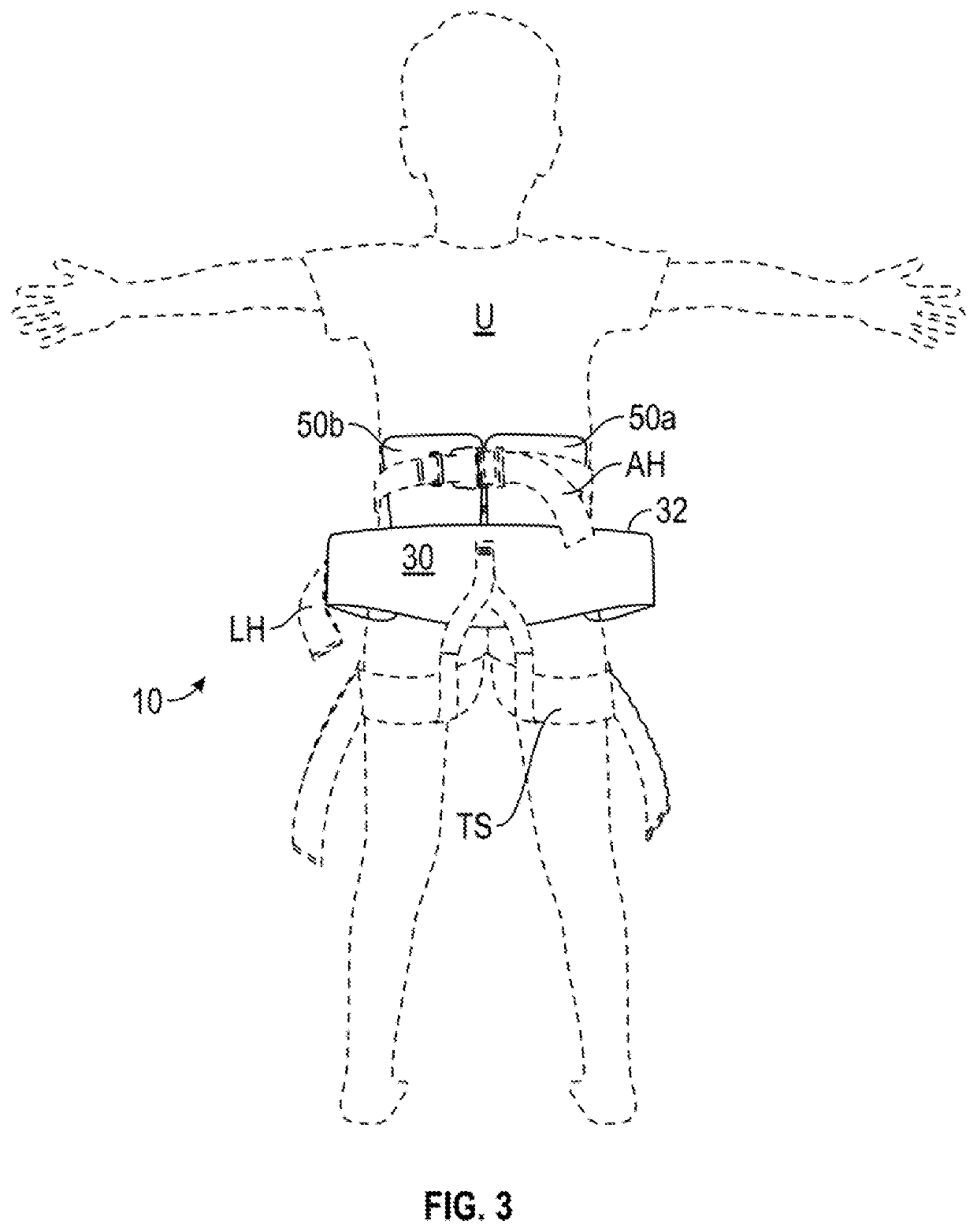Swimming aid
a technology for swimming and aids, applied in the field of swimming aids, can solve the problems of not being able to learn how to swim, not being able to breathe through the nose or mouth, and non-swimmers, etc., and achieves the effects of easy rotation, increased buoyancy, and sufficient buoyancy
- Summary
- Abstract
- Description
- Claims
- Application Information
AI Technical Summary
Benefits of technology
Problems solved by technology
Method used
Image
Examples
Embodiment Construction
[0028]The presently preferred best mode for practicing the present invention is illustrated by way of example in FIGS. 1 to 6.
[0029]Referring to FIG. 1, shown is a perspective view of a user U wearing the device 10, which has a lower back float 30 retainable around the user's lower back, and an abdominal float 50, preferably comprising left subfloat 50a and right subfloat 50b, retainable against the user's abdomen. By abdomen is meant the front portion of the user's abdomen, between the pelvis and the rib cage.
[0030]The lower back float 30 can be retained against the user's lower back by any suitable means. Shown is a lower harness LH having various straps that encircle the user at the lower back level and also extend underneath the crotch and down to the user's legs and include thigh straps TS, as in a rock climbing harness, but any other suitable means may be used instead. The lower harness LH preferably includes the thigh straps TS to help the lower harness LH prevent the lower b...
PUM
 Login to View More
Login to View More Abstract
Description
Claims
Application Information
 Login to View More
Login to View More - R&D
- Intellectual Property
- Life Sciences
- Materials
- Tech Scout
- Unparalleled Data Quality
- Higher Quality Content
- 60% Fewer Hallucinations
Browse by: Latest US Patents, China's latest patents, Technical Efficacy Thesaurus, Application Domain, Technology Topic, Popular Technical Reports.
© 2025 PatSnap. All rights reserved.Legal|Privacy policy|Modern Slavery Act Transparency Statement|Sitemap|About US| Contact US: help@patsnap.com



